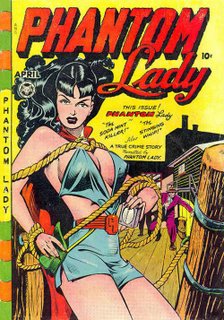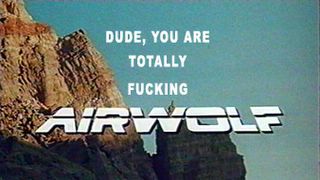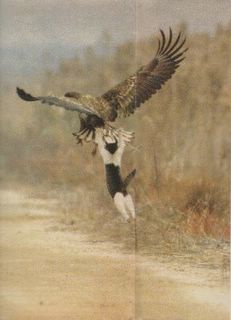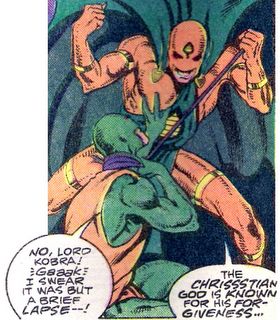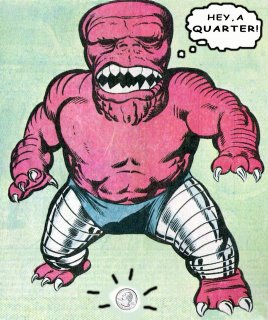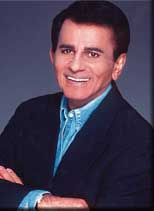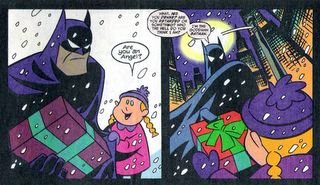 Boob War Week
Boob War Week continues with a look at some vintage catfight action!
Let’s get the credits out of the way:
Dazzler #13 was written by Danny Fingeroth, penciled by Frank Springer, inked by Vince Coletta, and, perhaps most importantly, was edited by the legendary/infamous Jim Shooter. You know, I should have a Jim Shooter Week. It wouldn’t involve Jim Shooter’s breasts (unless anybody has pictures of them).
Anyway, thank God that these brave people had the guts to think outside the box and deliver the comic-reading public of the eighties what it really wanted, even if it didn’t know it. Really, what kid didn’t want to read about a mutant disco queen who sang and roller skated and blasted people with light?
Dazzler was like a more violent version of the beloved Olivia Newton-John film
Xanadu.
His particular issue proves that Marvel could rock the Boob War even in the early eighties. The official title of the story is “Trial… And Terror” but I like to call it “Dazzler’s Prison Catfight Special.”
Reading through the comic, one wonders who exactly this book was targeted towards. In this issue, Alison Blaire, aka Dazzler, has some issues with her disapproving asshole father, tries to get some work, gets dumped by her boyfriend, gets arrested for the murder of Klaw in a previous issue, gets in a catfight with a bunch of costumed female wrestlers in prison, and ultimately stands trial and is found not guilty. It’s like a weird hybrid of the old newspaper strip
Apartment 3-G, the film
Chained Heat, and a
Law & Order fan-fiction story.
I can just see Jim Shooter talking about this issue with Danny Fingeroth and Frank Springer:
“I like all the soap opera shit, Danny, and the trial scene. Girls will love it. But you know what we need? A catfight. I’d like her to not being wearing a lot of clothes. Can you work that in?”
Let me be honest with you for a minute. I have never liked
Dazzler, not even in an ironic way. The
Dazzler series always tread an uneasy line between weepy movie-of-the-week drama and super-heroic action, as this issue illustrates. I just never liked her as a character. Her mutant power enables her to absorb sound and turn it into light – hence the name. She’s supposed to be a plucky, struggling starlet who just wants to sing and dance, but really she comes across as a shallow whiner.
In this issue alone, I counted six different panels where she breaks into tears, including this one, where her boyfriend breaks up with her in a crowded restaurant because he thinks she won’t make a scene. Boy, is he wrong!
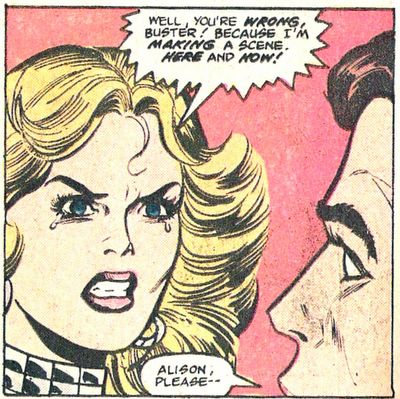
In an issue preceding this one that I haven’t read, Dazzler “kills” Ulysses Klaw during a big fight at Project: Pegasus. For reasons unclear to me, the government suddenly gives a shit about the fate of a supervillain that we all know is going to come back anyway, and they arrest her.
Dazzler has to spend the night in a sound-proof cell in Ryker’s Island, a maximum security prison where actor
Jonathan Frakes tortures inmates by sitting on them and farting while eating fried chicken. No, no – wait. I made that up, the Jonathan Frakes part.
All the female prisoners of Ryker’s Island are given skimpy outfits to wear – Dazzler gets some pajama pants and a sexy belly-shirt for her overnight stay. She’s trying to sleep in her drafty pajamas when the door busts open and Dazzler is dragged out of her cell by The Grapplers – a gang of super-power female wrestler/criminals that Dave’s Long Box readers last saw in
this Marvel Team-Up review.
The Grapplers have heard that Dazzler killed Klaw and want to know why and how, so they pull her before the entire scantily clad population of Ryker’s Island and beat her up. There’s a lot of hair-pulling, midriff baring, and some titillating glimpses of Dazzler’s dazzlers, if you know what I mean. Plus, Dazzler screams “No!
NOOOO!” a lot.
Take a look:
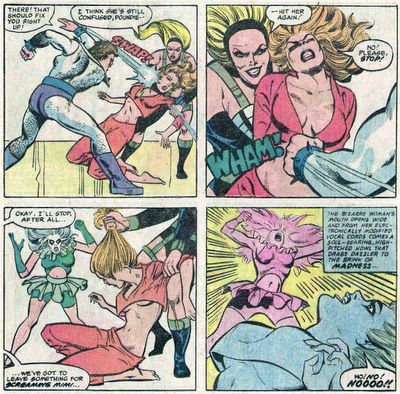
Okay, I have a couple of questions: If these women are supposed to be in prison, how exactly are they wearing their costumes? Shouldn’t they be dressed in halter-tops and cut-off shorts like all the rest of the female inmates? And what kind of prison are they in where they can just bust into (unlocked) cells or roam free at night? There’s a scrap of dialogue which says that The Grapplers bribed/threatened the guards, but I’m not buying it.
Back to the catfight. Dazzler gets smacked around by Letha, Poundcakes, and Screaming Mimi while the other well-endowed inmates look on with Sapphic interest:
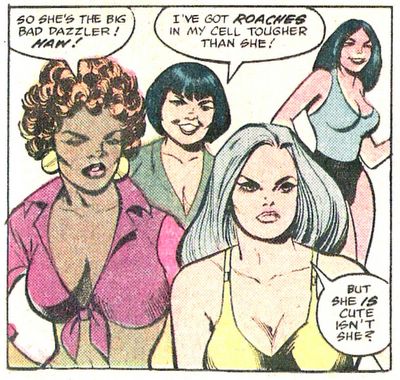
Fortunately, Dazzler absorbs Screaming Mimi’s sonic powers, turns the sound into light, and wipes out The Grapplers. Unfortunately, she doesn’t appear in court the next day wearing her tiny shirt – that would have been cool.
The court scene?
Wow. The writers of frickin’ Matlock would be embarrassed by how strangely boring and unprofessional the whole thing is. She cries a few more times, the jury finds her not guilty, end of story.
And that, my friends, is how they did Boob War back in the day. Well, that and those kick-ass Frank Thorne
Red Sonja issues. But that’s another story…


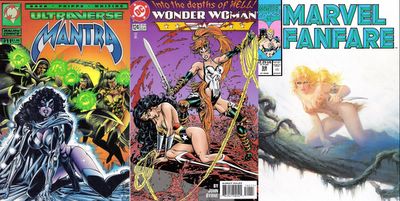
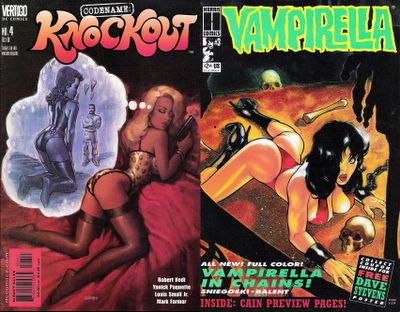
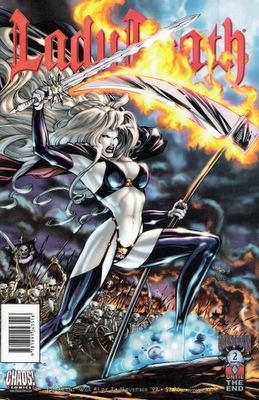





























 My confusion aside, it's pretty easy to follow the storyline in Silver Sable #27, even if you're not
My confusion aside, it's pretty easy to follow the storyline in Silver Sable #27, even if you're not


